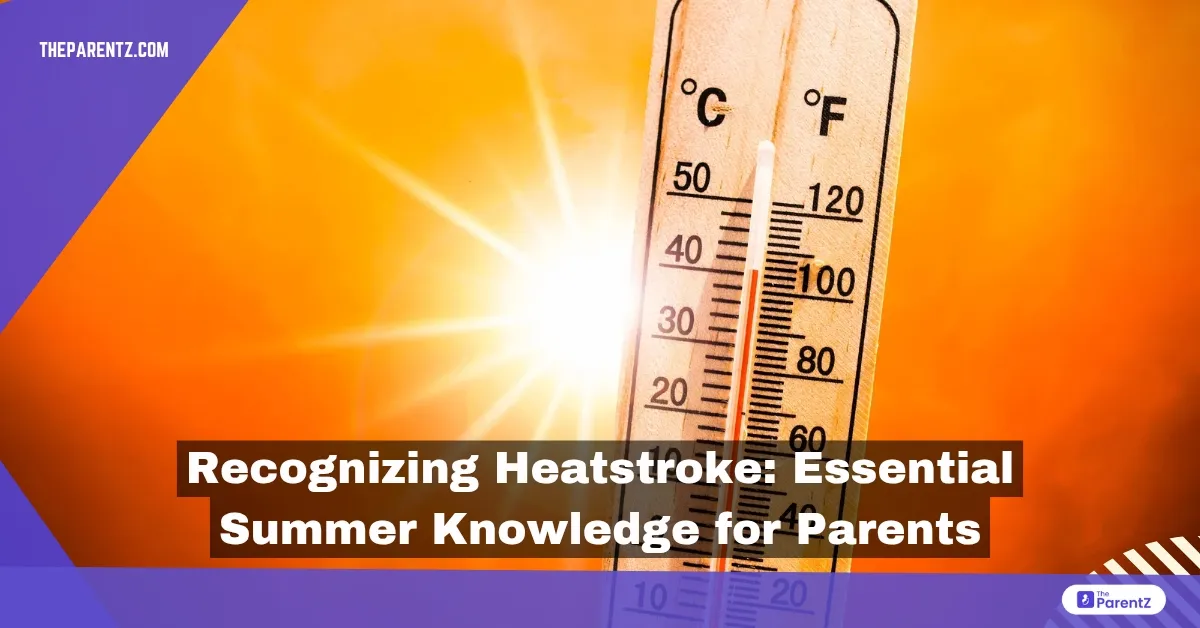Summer brings sunshine and lots of outdoor play. But along with it, comes the risk of heat-stroke, especially for children. Especially since their bodies are a little more vulnerable to extreme heat perhaps, faster than adults, they may not recognize the early signs of overheating.
Therefore, it is important to know the signs, prevention tips, for heat stroke. Read this article to explore more about heat stroke and what parents must know.
What Is Heat Stroke?
Heat stroke occurs when the body's temperature rises rapidly, probably above 103°F or 39.4°C, and the body can no longer cool itself. Contrary to heat exhaustion, which can be managed easily with rest and hydration, heat stroke is more severe and can lead to organ damage, seizures, and death if not treated immediately.
Playing outdoors for extended periods, dehydration, and exposure to high temperatures (especially above 90°F or 32°C) are some factors that may significantly increase the risk of heat stroke.
Signs of Heat Stroke in Kids
Here are the common signs of heat stroke in kids you can look for
- High body temperature (above 103°F or 39.4°C)
- Hot, dry skin or sometimes profuse sweating
- Red, flushed skin
- Rapid heartbeat
- Dizziness, confusion, or difficulty speaking
- Nausea or vomiting
- Headache
- Weakness or muscle cramps
- Seizures or loss of consciousness (in severe cases)
What to Do If Your Child Has Heat Stroke
Since heat stroke is a medical emergency, if you suspect it, it is recommended to follow these steps:
- Call emergency services (102 or 108 or your local emergency number) immediately.
- Move your child to a cool, shaded area or an air-conditioned place.
- Remove excess clothing to help lower body temperature.
- Cool their body quickly by applying cold and wet cloths to the skin. You can alternatively try spraying them with cool water or using ice packs on the armpits, neck, and groin.
- Let them take small sips of cool water if they are conscious and able to drink.
- Fan them to increase air circulation around their body.
Make sure you do not give caffeinated or very cold drinks, as they can worsen the situation.
Tips to Prevent Heat Stroke in Kids
Here are some effective tips on how you can keep your child safe from heat stroke:
Keep Them Hydrated
This is perhaps the most important aspect. Kids should drink plenty of water, coconut water, or homemade electrolyte drinks throughout the day. Let them to sip water every 20–30 minutes, even if they don’t feel thirsty.
Avoid Peak Sun Hours
Try to schedule outdoor playtime during the cooler parts of the day—before 10 AM and after 4 PM—when the sun’s rays are less intense to prevent the risk of heatstroke altogether.
Dress Smartly
Lightweight, loose-fitting, and light-colored clothing helps reflect heat rather than absorb it. Using a hat and sunglasses may also provide additional protection.
Take Frequent Breaks
Let your child rest in the shade or indoors after every 20–30 minutes of outdoor activity. In case, they feel dizzy or tired, stop all activities immediately.
Never Leave a Child in a Hot Car
Did you know that even with the windows cracked, a car’s temperature can rise rapidly, reaching deadly levels within minutes. Therefore, never leave your child unattended in a vehicle, even for a short period.
Use Cooling Strategies
Giving your child cool baths, placing a wet cloth on their neck, or letting them play with a spray bottle filled with cool water can also magically help regulate body temperature.
Watch for Early Warning Signs
If your child complains of feeling overheated, dizzy, nauseous, or has a headache, take immediate action and move them to a cooler place and hydrate them.
Conclusion
Heat stroke is a serious condition. The best approach is to completely avoid it by effective prevention tips. This summer, keep your little ones cool, hydrated, and safe. If you notice any warning signs, seek immediate medical attention.








Be the first one to comment on this story.